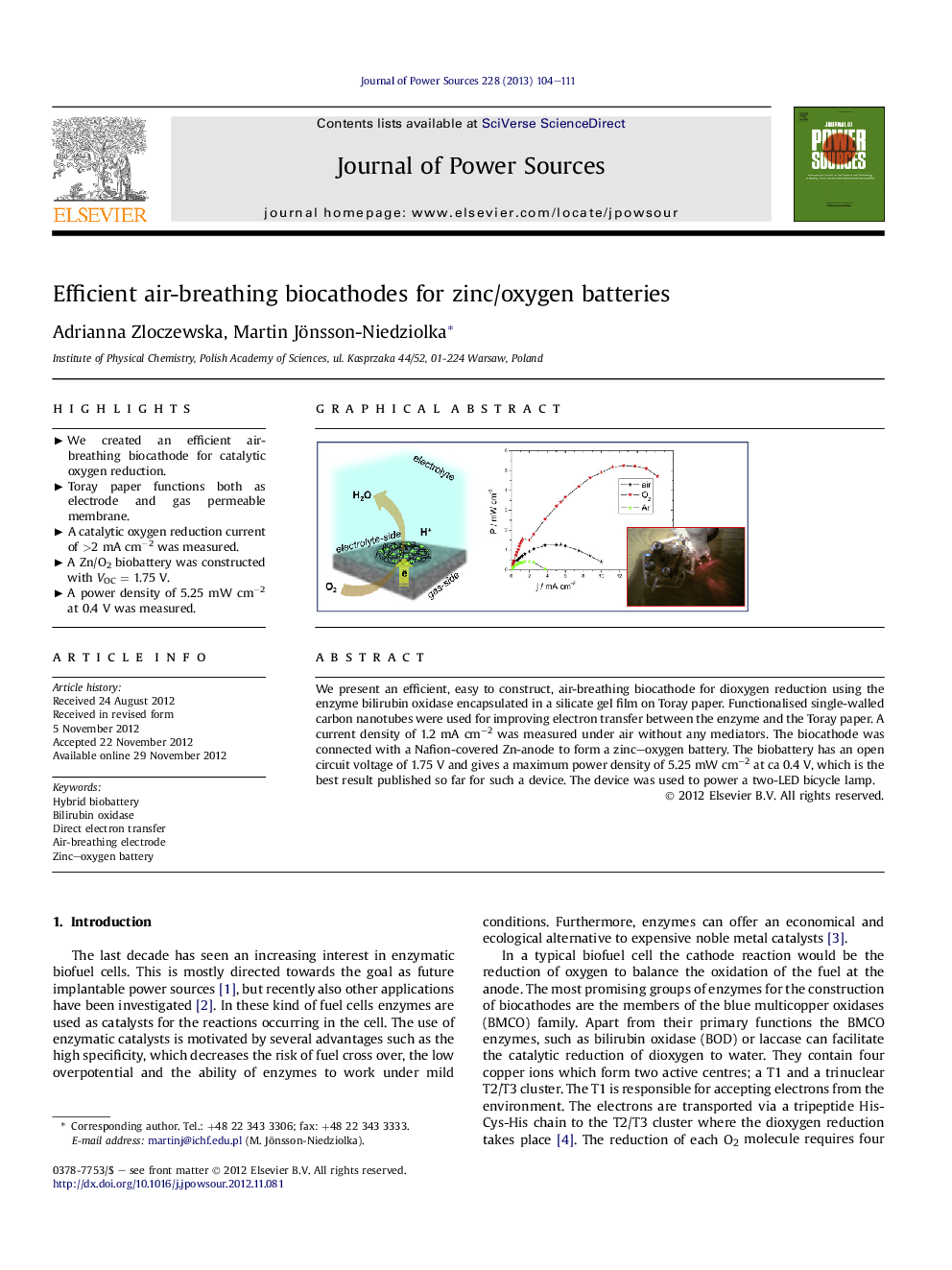| Article ID | Journal | Published Year | Pages | File Type |
|---|---|---|---|---|
| 1288214 | Journal of Power Sources | 2013 | 8 Pages |
We present an efficient, easy to construct, air-breathing biocathode for dioxygen reduction using the enzyme bilirubin oxidase encapsulated in a silicate gel film on Toray paper. Functionalised single-walled carbon nanotubes were used for improving electron transfer between the enzyme and the Toray paper. A current density of 1.2 mA cm−2 was measured under air without any mediators. The biocathode was connected with a Nafion-covered Zn-anode to form a zinc–oxygen battery. The biobattery has an open circuit voltage of 1.75 V and gives a maximum power density of 5.25 mW cm−2 at ca 0.4 V, which is the best result published so far for such a device. The device was used to power a two-LED bicycle lamp.
Graphical abstractFigure optionsDownload full-size imageDownload as PowerPoint slideHighlights► We created an efficient air-breathing biocathode for catalytic oxygen reduction. ► Toray paper functions both as electrode and gas permeable membrane. ► A catalytic oxygen reduction current of >2 mA cm−2 was measured. ► A Zn/O2 biobattery was constructed with VOC = 1.75 V. ► A power density of 5.25 mW cm−2 at 0.4 V was measured.
